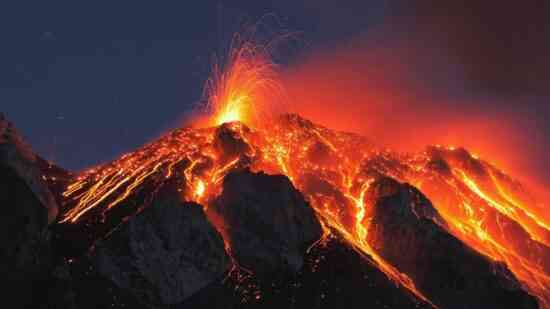Volcano — natural phenomenon is not only frightening, but also really deadly. Science has already thoroughly studied the cause of the appearance of volcanoes in one place or another, but humanity still does not know the main — how to avoid an eruption or prevent it. Although no one can guarantee that this is even possible…
Interesting facts about volcanoes
- The strongest eruption in the history of observations occurred in 1815 in Indonesia, when the Tambora volcano ejected almost 180 cubic kilometers of matter into the atmosphere. The explosion of the volcano, which marked the beginning of the eruption, was heard over two thousand kilometers. Then more than 70 thousand people died, and because of the ash raised into the atmosphere, the next year was abnormally cold for Europe and North America. In addition, the volcano completely destroyed the Tambor culture and the speakers of the Tambor language. By the way, at present, activity in the bowels of Tambora is growing again, and a new eruption is very likely.
- There are about one and a half thousand active volcanoes on Earth, most of which are located at the bottom of the seas and oceans.
- Even an extinct volcano can suddenly come to life at any moment.
- A hugely popular ski resort, Mount Elbrus is a volcano. Which, judging by some signs, may also be about to wake up.
- The most dangerous of the active active volcanoes is El Popo, located about 50 kilometers from the capital of Mexico and annually ejecting thousands of tons of ash and hot gases into the atmosphere.
- The greatest danger during an eruption is not molten magma, but pyroclastic streams — the very thing that seems to be a river of ash and smoke. The temperature inside them can reach one and a half thousand degrees.
- Australia — the only continent that does not have a single active volcano.
- Volcanoes are not only on Earth — for example, Jupiter’s moon Io is literally littered with them (interesting facts about Jupiter).
- In addition to ordinary volcanoes, there are also cryovolcanoes that eject water and ice instead of magma. There are, for example, on Enceladus — satellite of Saturn.
- The speed of hot lava flows can reach 90 kilometers per hour.
- The eruption of the supervolcano Toba, which happened about 75 thousand years ago, caused not only global cooling, but also such a terrible effect as rains of sulfuric acid.
- In Iceland, volcanic heat is used to generate cheap and environmentally friendly electricity.
- Hawaii’s Kilauea Volcano has been erupting continuously since it erupted in 1983.
- The highest mountain on Earth, measured from base to peak — located in the Hawaiian Islands of Mauna Loa. Its volume — about 75 thousand cubic kilometers, and the height — almost 10 kilometers, although it rises only 4169 meters above sea level. Mauna Loa began to form over 700 thousand years ago.
- The highest volcano in relation to sea level — located on the border of Argentina and Chile, Ojos Del Salado, rising to a height of 6890 meters. Luckily, it is long asleep, unlike the aforementioned Mauna Loa.
- The 1600 eruption of South America’s Huaynaputina Volcano killed about three million people in Russia as volcanic ash blocked the sunlight and caused a cold and cropless summer.
- Volcano St. Helens, which erupted in 1980, covered an area of 57 thousand square kilometers with ejected ash.
- The deepest underwater volcanic eruption ever recorded occurred in 2008 at a depth of about 1.2 kilometers.
- The southernmost volcano on Earth, Erebus, is located in Antarctica, and it is constantly erupting.
- A sufficiently powerful volcanic eruption can change the climate on the planet and cause the real end of the world. The prime candidate for the destruction of our civilization — Yellowstone supervolcano located in the USA. It erupted for the first time about 2.1 million years ago, and the last — about 640 thousand years ago. It erupted three times in total.
- The most «permanent» volcano — Etna is located in Italy. It has been erupting periodically for over 1,500 years.
- The eruption of the Indonesian volcano Krakatoa in 1883 was 10,000 times more powerful than the atomic bomb that destroyed Hiroshima. As a result of the explosion, the island on which the volcano was located was destroyed, and fragments of rocks scattered over a distance of up to 500 kilometers. In December 1927, another eruption occurred at this site, as a result of which a new volcano began to grow.
- The most active volcano in the Northern Hemisphere of the Earth — Klyuchevskaya Sopka located in Kamchatka.
